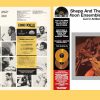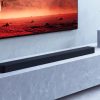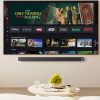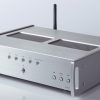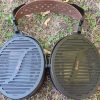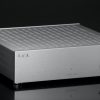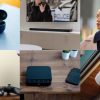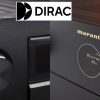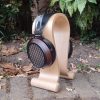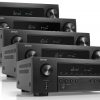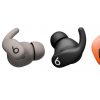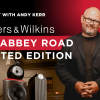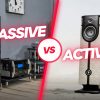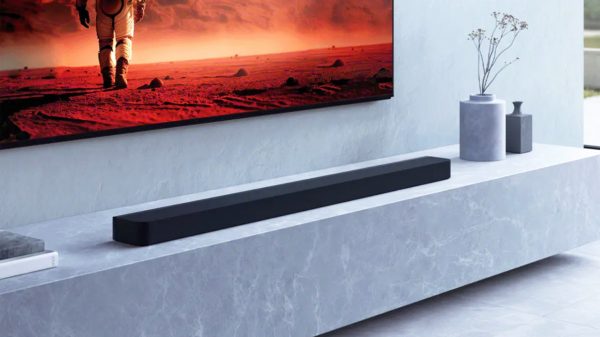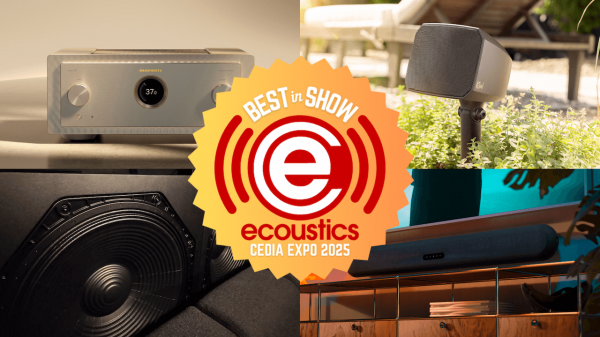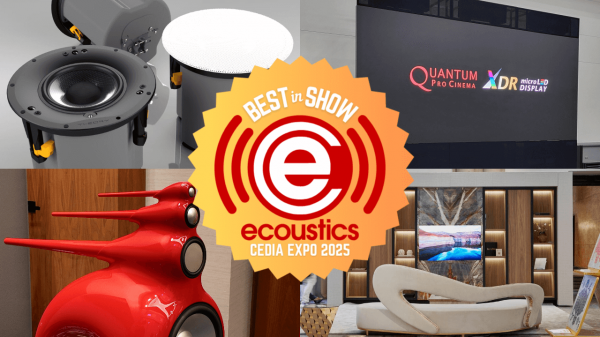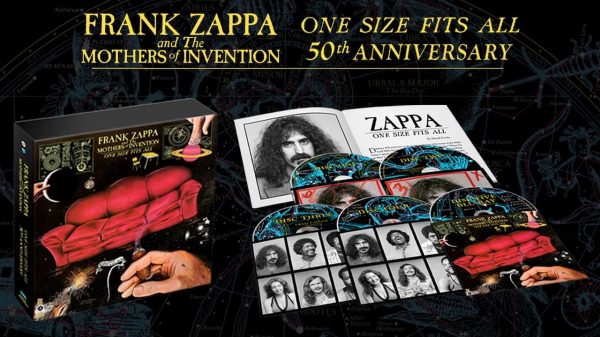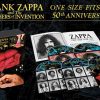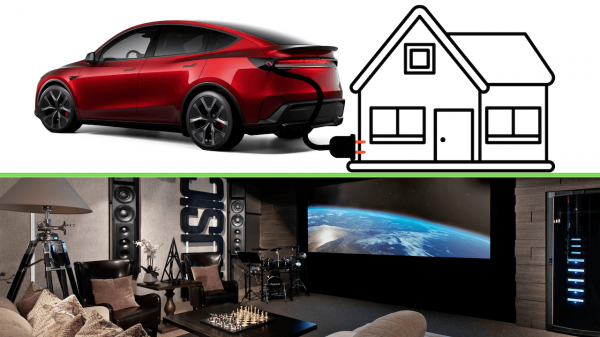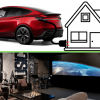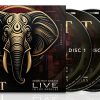We were more than a little impressed with the Theory Audio Design 5.2.2 soundbar system, and our experience raised a lot of questions. Engineering a soundbar system that can deliver movie theater-quality dynamics and scale is a very difficult task. Delivering state-of-the-art sound quality in a package for under $20,000 is a game changer; it also exposed just how large the performance gap is between soundbar home theater systems being sold for under $2,000 and this system. You can certainly spend $20,000 on a dedicated 5.2.2 Dolby Atmos system and achieve great sound, but none of the systems we’ve heard (including a few selling for considerably more) can offer the same dynamic performance, detail, and sense of scale.
Paul Hales, President and Product Designer, Theory Audio Design, was very kind to sit down and speak with us about his design philosophy and explain the differences between their products and the rest of the home theater category.

What inspired you to create a product like this in a category where consumers have traditionally spent less than $1,000 for an entire system?
I’ve been at this a long time, in the 1990s in the high-end audiophile segment, then in the early 2000’s in professional audio when I was Director of R&D at QSC Audio. Most audio professionals, I think, believe that specific types of loudspeakers are necessary for the disparate audio applications: huge horn-based PA boxes for professional applications, floor or stand mount “cones and domes” style speakers for consumer hi-fi, “bookshelf” style powered monitors for studio applications, etc… In fact, the products for these different segments have hardly changed since the 1990s. It seems as though everyone else is building the same products they have been building for decades. This is limiting and it is also very boring.
I take a different approach and apply literally everything I’ve learned by designing speakers (and now DSP amplifier-processors) for all of those market segments into every design, regardless of market niche. This is why PRO and Theory products are a blend of professional and consumer technologies.
PRO has enjoyed great success in the very-high-end residential home cinema market segment by marrying professional and consumer engineering together, but it targets a very small niche market. Some of the most powerful people in the world: movie stars, music moguls, CEOs, and world leaders own PRO systems.
Which leads us to Theory. Theory, quite simply, is my effort to bring this somewhat unique approach to audio product design that I first applied at PRO, to the rest of the world outside of the $200,000 dedicated residential theater.
Theory is not a sub-$1,000 brand because that’s not possible with my approach, and that segment is already over-populated with me-too brands all of which have lackluster performance and general low-quality.
Premium products resonate with me in general, whether it be cars, watches, wine, tools of any kind or audio electronics. So with Theory, I’m addressing the premium segment within residential and commercial applications, surround sound and distributed audio, indoors and out, with specific emphasis on premium commercial spaces: hotels, restaurants, bars, spas, corporate offices, etc. Honestly, I just love developing premium products – from the ID to the user-interface, to the materials, to the final performance of the product.
Commercial spaces are becoming increasingly more refined and high-end, in North America but also world-wide. The audio products that address those spaces, have not kept up. Theory will address that head-on.
We seek to be the “Porsche” of audio products: a premium brand with a small stable of the most capable products available. We promise to deliver the very best performance available in every product category we enter. A big claim, but I think we’ve proven that with the Theory soundbars and subwoofers. Feedback from consumers, dealers and journalists has been unanimous – we’ve created a new performance bar for those products. Now we’re going to do it with architectural and outdoor products.
What do you see as the biggest weakness of most home theater systems?
In my opinion, consumer loudspeakers sound dynamically compressed and aurally “small” compared to real life. Home theater systems should be able to play at high output levels without strain or distortion in order to capture the dynamic “life” and scale of the real instruments and theatrical sound effects sound mixers have mixed into today’s movies – especially with the development of Dolby Atmos and other immersive surround sound formats.
The modern movie mixes are insanely dynamic – the difference in level between dialog and small ambient content in the soundtrack compared to the sound effects is quite simply greater than typical home theater systems can reproduce without strain (distortion) or even total failure. When consumers have the volume loud enough to understand the dialog, the sound effects come along and nearly blow the speakers up. If the user turns the level down to preserve the speakers from failure, they can no longer understand the dialog.
This is not true with Theory – we resolve the lowest level information with shocking clarity, and we can hit the peaks without distortion. The “life” this adds to the sound is startling and simply seems way more “real” than a hi-fi system. Plus, it’s thrilling and fun, which is the whole point of movies and music in the first place.
Can you offer a short timeline of your career? How did your experience (Hales Audio to pro audio and then back to Theory) as a loudspeaker designer impact the design of this system?
In 1989, I founded Hales Design Group and introduced my first high-end loudspeaker to the world – the System Two. This model and many more to come disrupted the two-channel audio world, earning stellar product reviews from many esteemed audio journalists, and established myself as one of the leading loudspeaker designers in the industry.
In 2000, I was approached by QSC Audio, the leading manufacturer of professional power amplifiers in the world. They offered me a position as Director of R&D – Loudspeakers, which I accepted, and was tasked with creating a new loudspeaker engineering division from scratch. During my tenure, I worked extensively with DSP control, professional grade transducers, high frequency waveguides and horns, and audio over IP (Cobranet). I also oversaw the development of the QSC corporate logo and loudspeaker design language (which I patented), both are still in use to this day.
Unlike consumer “hi-fi” loudspeakers, which I’ve always found to be dynamically compressed and aurally “small”, I have always admired the durability, reliability, and ability of professional loudspeaker systems to play at high output levels without strain or distortion. In my opinion, professional loudspeakers, especially those which employ DSP processing, capture the dynamic “life” and scale of real instruments and theatrical sound effects much closer to the real thing. So-called hi-fi speakers sound unnaturally small and dynamically anemic when compared to real life. They are way more “polite” than reality.
In 2004, I returned to residential audio with a new perspective and new speaker company – Professional Home Cinema (PHC) – now known as Pro Audio Technology (PRO). Putting together everything I’ve learned in high-end and commercial audio, PHC introduced a category of audio that did not previously exist in the market; professional style loudspeakers designed specifically for residential installed systems. The product line comprised of DSP amplifiers/processors with professional grade loudspeakers and the added sonic refinement of high-end residential speaker sound. The intelligent full system design approach allowed me to tailor the DSP and maximize the performance of every system. It quickly became the system of choice by many A-list movie stars, producers, directors, and studio executives for their personal screening rooms.
Today, PRO continues to occupy this unique niche in the marketplace. PRO offers all the advantages of professional grade products – unlimited dynamic range, reliability, and durability – but with the delicacy, detail, and resolution of the very best high-end speakers.
In 2020, I made the decision to disrupt the audio market once again with the launch of Theory Audio Design in response to demand for PRO’s superior sound outside of dedicated theater room and high-end commercial applications. Using trickle down engineering and componentry from PRO, assembled into sleek and compact enclosures, Theory has created an entirely new category of audio for every audio application beyond the dedicated home theater.
Why does the system not include a surround sound processor? Was it an issue of keeping the system below a specific price point or because you felt that there were enough quality products already available that you wanted to give customers the option to use their own?
The short answer is that it’s not practical from a business standpoint at this stage in the company’s maturation. The licensing fees, product complexity and just the risk and uncertainty surrounding HDMI alone make it challenging and undesirable.
That said, however, I have an idea to add the surround decoding functionality to the Theory eco-system, but not in the traditional way you may be thinking. We’ll visit that category after we’re fully established in commercial with Theory Professional.
Where do you see loudspeaker design moving in this specific category? Consumers see the term “wireless” and get all excited, but can a wireless loudspeaker system really deliver the level of performance that this system can?
Right now, it’s not possible to deliver high resolution, high quality audio reliably over wireless technologies. Audinate, with Dante, has perfected the delivery of reliable, high-quality audio over wired networks and we’re including that in the new Theory ALM Loudspeaker Controllers coming this summer, but for the moment, it can’t be done wirelessly.
For lower-performance, basic systems, wireless has a lot of consumer appeal, which I understand. I like simplicity too. But, for the kind of performance we’re targeting, for now at least, we’re going to have to deal with some wires. Fortunately, with the inclusion of Dante/AE67 network functionality, the number of line-level wires in a large distributed goes down to ONE – an Ethernet cable – to distribute audio over long or short distances.
The ALM loudspeaker controllers, which have full mixing capability will be the next Theory product to (likely) upset the market. They can do basically everything needed for complex commercial distributed audio and surround sound with 10 channels and up to 8,000 watts of power in a single 2U chassis.
What are some of your favorite films to watch on your systems?
I got into the audio business out of my love of music and transitioned to professional audio from consumer out of my love of movies – I wanted to design products for commercial cinemas.
When I first got into audio I almost “accidentally” got recognition at the top of the high-end world right out of the gate. I was 22 years-old and unprepared for the rapid success. One funny, but pivotal moment occurred very early on in my career. Hales Design Group had got onto the radar of Harry Pearson, the mysterious publisher of The Absolute Sound. He invited me and my then business partner to dinner in NYC where we were exhibiting at a Stereophile Show.
He took us to a very high-end Northern Italian Restaurant. Prix Fixe only. No prices anywhere on the menu. I can only imagine what it cost. When I asked him if he ate like that often, Harry said something to me I’ll never forget. He said “Paul, I live to stimulate my senses and my emotions, whether it be my sense of taste with fine cuisine, my emotions with literature, or with music.”
That resonated with me, because that’s exactly how I feel about life. We’re only here a short period of time, and I want to stimulate my humanity as much as possible. So you might be surprised to learn that while the dynamic action-adventure blockbusters exercise my products to a greater extent – the movies I prefer tend to be the emotionally-complex ones and those beautifully filmed. I’m a cry baby, so stimulating emotions, joy, sadness, anger, etc. makes me feel more connected.
Music does this too, aurally. I also need to be stimulated intellectually. So my favorite films tend to come from directors like Sam Mendez, Quentin Tarantino, Christopher Nolan, Paul Thomas Andersen, and Clint Eastwood. I love the creativity of Tim Burton and even the subtly of Sophia Coppola’s films. Not the usual picks for sonic fireworks but all filmmakers whose work resonates with me.
But if you’re looking for quality films with spectacular sound there are some consistent choices: any animated movies from Pixar or Disney, all of the Marvel movies (also Disney), Angelina Jolie’s Unbroken has a spectacular Atmos soundtrack, if you want louder-than-hell with chest-crushing bass, any Michael Bay movie will do (Transformers). There is also great music being mixed in Atmos. R.E.M.’s “Automatic for the People” is awesome in Atmos and “Kraftwerk 3D” is an aural thrill ride with an EDM/Dance club vibe. Both are awesome on a Theory system.
With that said, my family goes to our Experience Centers in Orange County, California, on a regular basis to watch films on the Theory 5.2.2 system or the big-boy 21-channel PRO 11.4.6 system. And I have to say, the general quality of today’s soundtracks is so good that it almost doesn’t matter anymore. These system makes the experience so much more captivating and believable.
I was watching a streaming TV show at home on a Theory 3.1 system recently, and there was a scene in a bar with a man and woman having a conversation at the bar top. Their dialog was the focus of the mix, but Spandau Ballet’s “True” was in the soundtrack mixed to sound like it was coming from the pool room outside the bar area. It was subtle. But man, was it rendered realistically – it sounded like it was 50’ behind the TV and was low in level, further indicating the distance of the source.
But it was clear as a bell and perfectly rendered – it was so real. I closed my eyes and swore I was in that environment with that damn song playing a room over. It was incredibly believable. I was in the scene, in the bar with these two people. And this was just from 3.1-channel system. The point is a good system can enhance the experience even with a simple TV show dialog scene. (And now I have that damn song stuck in my head!)
Learn more: Read our full review of the Theory Audio 5.2.2 Soundbar System


